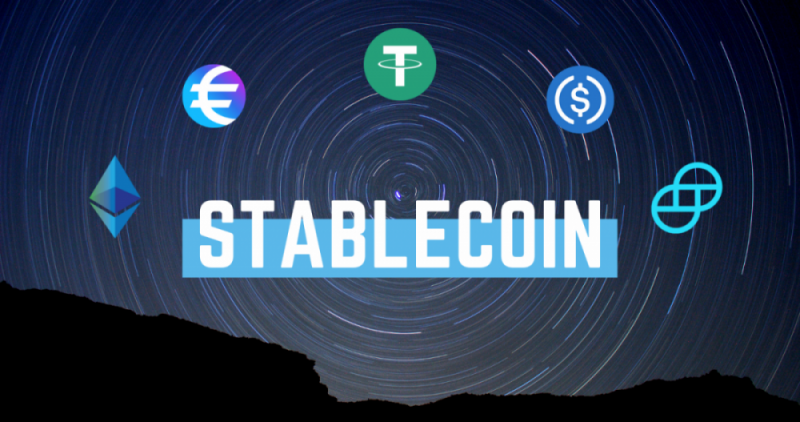Stablecoin Risks Rise in Emerging Markets, FSB Warns
26.07.2024 21:00 1 min. read Alexander Stefanov
A recent Financial Stability Board (FSB) report warns of significant risks linked to the increasing use of global stablecoins (GSCs) in emerging markets and developing economies (EMDEs).
According to the report released on July 23, the rise in stablecoin adoption, particularly those pegged to foreign currencies, poses potential threats to financial stability in these regions.
The surge in stablecoin use is fueled by limited banking access and local currency volatility. However, regulators are concerned that these digital assets might destabilize financial systems and amplify economic challenges. The report highlights that recent stablecoin failures underscore their vulnerability if not properly managed.
Key risks identified include threats to financial integrity, potential for illicit finance, and cybersecurity issues. To mitigate these risks, the FSB recommends developing strong regulatory frameworks and improving international cooperation.
Currently, major stablecoins like Tether (USDT) and USD Coin (USDC) are pegged to the US dollar, while new stablecoin projects are emerging, such as Paxos’s gold-backed stablecoin in Singapore and plans for a Hong Kong dollar-linked stablecoin.
Recent EU regulations have also led to the delisting of some stablecoins by crypto exchanges, raising speculation about a potential shift towards euro-backed stablecoins in the future.
-
1
SoftBank and Ark Invest Linked to Tether’s Multibillion-Dollar Fundraising Talks
27.09.2025 9:30 1 min. read -
2
Fasset to Launch World’s First Stablecoin-Powered Islamic Digital Bank in Malaysia
07.10.2025 11:00 2 min. read -
3
TeraWulf Targets $3B Data Center Expansion, Google Said to Backstop
27.09.2025 11:00 1 min. read -
4
Franklin Templeton Expands Tokenization Platform to BNB Chain
24.09.2025 18:00 2 min. read -
5
BNB Chain’s X Account Hacked in Phishing Attack, Restored After Small Loss
01.10.2025 14:14 2 min. read
Changpeng Zhao Responds to Criticism, Highlights Binance Efforts to Shield Users
Tensions flared between Binance and decentralized trading platform Hyperliquid following last week’s severe crypto market downturn.
Crypto Market Momentum Depends on Washington’s Next Move
The ongoing U.S. government shutdown has entered its third week, halting progress across key financial agencies and putting dozens of crypto-related exchange-traded fund (ETF) applications on hold.
Wall Street’s New Crystal Ball: Why Bank Earnings Are Critical Amidst Economic Uncertainty
The usual deluge of economic data that guides Wall Street has run dry, interrupted by an ongoing federal government shutdown.
Biggest Crash in History? Kiyosaki Sounds Alarm Once Again
Robert Kiyosaki, author of Rich Dad Poor Dad, has once again issued a grim forecast for global markets, warning that the largest economic collapse in history could unfold before the end of this year.
-
1
SoftBank and Ark Invest Linked to Tether’s Multibillion-Dollar Fundraising Talks
27.09.2025 9:30 1 min. read -
2
Fasset to Launch World’s First Stablecoin-Powered Islamic Digital Bank in Malaysia
07.10.2025 11:00 2 min. read -
3
TeraWulf Targets $3B Data Center Expansion, Google Said to Backstop
27.09.2025 11:00 1 min. read -
4
Franklin Templeton Expands Tokenization Platform to BNB Chain
24.09.2025 18:00 2 min. read -
5
BNB Chain’s X Account Hacked in Phishing Attack, Restored After Small Loss
01.10.2025 14:14 2 min. read
As fears of U.S. tariffs loom, cryptocurrency investors are showing caution despite a significant increase in stablecoin supply.
Citi Research predicts that the cryptocurrency market will continue its rapid growth in 2025, with stablecoins and digital asset exchange-traded funds (ETFs) playing pivotal roles in driving adoption.
A new chart from Bitwise Asset Management has sent shockwaves through the financial world, showing that stablecoin transaction volumes are now rivaling—and in some cases surpassing—Visa’s global payments.
In December, the cryptocurrency industry experienced a notable increase in on-chain revenue, with stablecoins playing a dominant role.
For years, stablecoin activity was concentrated across just two networks, Ethereum and Tron.
A growing wave of financial institutions is turning to stablecoins, not just for cost-cutting—but as a cornerstone of future growth.
Stablecoins like USDT have become vital in Latin America, assisting people in managing ongoing economic difficulties.
The Monetary Authority of Singapore (MAS) has expressed confidence in the growing potential of stablecoins as a future payment method.
Stablecoins are no longer just a crypto-native tool—they’re reshaping financial access, payments, and even central banking dynamics.
Once a niche tool for crypto traders, stablecoins have evolved into heavyweight players in global finance - now holding more U.S. Treasury debt than countries like Germany, South Korea, and the UAE.
Tariffs imposed by the U.S. and subsequent retaliatory measures have created a market environment full of uncertainty, yet many experts view these actions as a negotiation tactic, believing the impact on businesses and consumers will be manageable in the long run.
The rise of stablecoins has created a new debate in the payments world: can blockchain-based money eventually compete with credit cards?
The total market capitalization of stablecoins, excluding algorithmic ones, reached an all-time high of more than $168 billion over the weekend.
FXGuys presale has raised over $3 million, and it's ready to yield 10x significant returns for investors .
UBS has issued a stark warning to investors, flagging stagflation as a looming economic threat.
Staking could play a pivotal role in enhancing the appeal of U.S.-based Ethereum exchange-traded funds (ETFs), according to Tom Wan, a former crypto analyst at 21.co.
Two asset managers are preparing to introduce a new class of cryptocurrency investment products that combine traditional exchange-traded fund (ETF) structures with staking income from Ethereum and Solana holdings.
Leading crypto exchanges are increasingly partnering with established banks to bridge digital assets with traditional finance, enhancing security for institutional clients.
Standard Chartered has taken a major step into the cryptocurrency space, becoming the first globally systemically important bank to offer spot trading for Bitcoin (BTC) and Ethereum (ETH) to institutional clients.
Standard Chartered has teamed up with key industry partners to seek a license for issuing stablecoins in Hong Kong, marking one of the first major moves since the city’s new regulatory framework for fiat-backed digital assets came into effect.


